|
|
|||
|
(Back to Preceding Week; on to Next Week) |
|
Blue-throated |
Week One is full and Week Three has only one slot remaining for our annual |
Canivet's |
|
HUMMINGBIRDS IN MESOAMERICA, Earlier this fall we got an inquiry from Mariamar Gutiérrez, an up-and-coming Nicaraguan environmentalist with the U.S. Forest Service's International Institute of Tropical Forestry. Mariamar was putting together a bird monitoring symposium for the XIIth Congress of the Society for Mesoamerican Biodiversity scheduled for November in the Latin American city of San Salvador.
Fortunately, Mariamar Gutiérrez (below left)--who spent her childhood years in Miami and now lives in Ohio where her husband is in grad school--is perfectly bilingual and agreed to serve as our interpreter at what is traditionally a Spanish-language meeting. The departure from Charlotte on the morning of 9 November was 45 minutes late--something about a dead battery on the aircraft that had been powered-down all night at the gate--so things were pretty rushed in Atlanta. We made our connection nonetheless and settled in by our usual window seat so we could see where we were going.
It wasn't long until we passed over the Florida panhandle and had nothing to look at but blue waters of the Gulf of Mexico. At times like this we ponder how amazing it is Ruby-throated Hummingbirds apparently cross these same waters, flying non-stop on three grams of yellow fat instead of hundreds of gallons of jet fuel. The flight continued southwest, skirting Mexico's Yucatan Peninsula and Belize before crossing over Guatemala. The pilot took us a little ways over the Pacific Ocean and then came back toward the Salvadoran coast for the airport approach into San Salvador.
All maps, text & photos © Hilton Pond Center Upon landing at the airport we were greeted by a SalvaNATURA volunteer who hailed a cab for the 25-mile ride through downtown San Salvador to our lodging, the Real Inter Continental. Just across the street from the hotel we saw something we hadn't anticipated: Metro Center (above), supposedly the largest shopping mall in Central America. This huge complex of stores has a main entrance flanked by--believe it or not--Pizza Hut, Tony Roma, and Kentucky Fried Chicken! (And inside the mall were at least three Mister Donut stores.) Menus in these places were an eclectic mix of ethnic dishes plus the fare you'd expect in similar eateries in the U.S. We ate a few times at the mall, but our best meal of the day was always the hotel's extensive breakfast buffet, complete with fresh fruit and juices, eggs, meats, vegetables, and our unexpected morning favorite of sushi and wasabi. Another big surprise: We paid for all our purchases throughout El Salvador with American dollars, the country's official currency.
As can be seen on the regional map above, El Salvador (flag, below left) is the tiniest country of Central America at 8,123 square miles--slightly smaller than Belize (8,867 square miles) or the State of New Jersey. There are about 6.7 million Salvadorans, making their country the most heavily populated in Central America. Dense population has led to replacing natural habitats with agricultural land, but there are still national parks and protected areas where native flora and fauna can be observed. The photo just above, taken from our hotel room, depicts a volcanic ridge partially farmed, Most of our week in San Salvador was devoted to attending a wide variety of paper presentations dealing with Mesoamerican biodiversity, all the while trying to figure out from their context the Spanish terms we were seeing and hearing. Our own presentation occurred on Thursday when--in English--we spoke about results of our hummingbird banding work in the U.S. and Costa Rica. Below is the English version of our abstract as it appeared in the printed program (cover, below right). Ernesto Carman Jr., our Costa Rican expert guide during all our years of work in his homeland, is listed as coauthor because of invaluable contributions to the success of our Neotropical hummingbird studies. An On-going Study of Ruby-throated Hummingbirds, Bill Hilton Jr. & Ernesto Carman Jr. Since December 2004 we have spent parts of seven weeks capturing and color marking Ruby-throated Hummingbirds (RTHU), Archilochus colubris, near Liberia, Guanacaste Province, Costa Rica, as part of the first intensive banding study of this species in the Neotropics. We're happy to say our presentation was well-received by the audience, which included more than 600 students and professionals from across Mesoamerica, and several from the U.S. The oral presentation was enhanced considerably by Mariamar Gutiérrez's expert translation of our PowerPoint slides into Spanish.
Although we truly enjoyed sharing our research results with Congress participants on Thursday, the high point of our week actually occurred the day before when we left the confines of hotel meeting rooms to explore surrounding countryside. At 5:30 a.m. Wednesday a dozen or so young Mesoamerican biologists (and a few North Americans) joined us for a two-hour bus ride to the west, Unfortunately, Mariamar came down with a tropical "belly bug" and had to miss the banding field trip to Cerro Verde, so she sent SalvaNATURA's able-bodied Roselvy Juárez (above right) to coordinate our efforts. Because Roselvy spoke little English, the bilingually loquacious Pablo Elizondo--Partners in Flight coordinator for Costa Rica--went along as our interpreter. (In a small-world coincidence, we discovered Pablo was a childhood friend of Ernesto Carman Jr., our in-country guide when we go to Costa Rica.) Roselvy also provided two of the photos on this page.
All maps, text & photos © Hilton Pond Center To get to Cerro Verde National Park the bus climbed several thousand feet up the slope of one of many volcanos that create El Salvador's mountain/valley topography. Along the way we passed picturesque Lake Coatepeque (above), a 10-square-mile expanse of water filling an old volcanic crater whose name translates as "Snake Hill." The caldera formed about 60,000 years ago, but despite no verified historical eruptions the volcano may still be active; there are hot springs around the lake and one lava dome appeared as recently as--geologically speaking--8,000 B.C. Within Lake Coatepeque is Teopan Island, an ancient site of importance for the Mayans, from whom many Salvadorans are descended.
When we finally arrived at Cerro Verde we unboarded the bus and were immediately attracted by a sign (above) with the inscription Colina El Colibrí--"The Hummingbird Hill." This embankment, right beside a main parking lot, was heavily planted with flowers of all shapes and colors, some of which looked like they might attract hummers. We walked around and observed for a few minutes and were pleased to see several hummingbirds buzzing through--including an adult male Ruby-throated Hummingbird sporting a full red gorget! Within a matter of minutes we had our first hummingbird--a Green-throated Mountain Gem (above left). Although this first hummer wasn't a ruby-throat, we were still pleased to have it in-hand. After all, the purpose of the field workshop was to teach the Salvadorans humane techniques for extracting hummingbirds from nets and then properly measuring and banding them prior to release, so any species was useful; plus, we didn't know if we'd catch any other hummers. The Green-throated Mountain Gem was a big lunker, almost twice the size of a Ruby-throated Hummingbird. Its brownish back, white ear, and faintly iridescent green throat were the field marks that led to its identification. Although Green Violetears are considered a tropical hummingbird species because they're most common from south central Mexico to Bolivia and Venezuela, they're known to wander extensively. In fact, they've been observed in at least 17 U.S. states as far north as Michigan and Minnesota. We'd never caught one, however, so it was nice to have one in-hand.
We also managed to net a juvenile Violet Sabrewing (above)--a species even larger than the mountain gem and violet ear. This scrappy hummer with slightly decurved bill was almost sparrow-sized and incredibly strong. Its forehead feathers were plastered down by a wad of sticky yellow pollen that, given time, we likely could have traced back to a specific nectar source.
All maps, text & photos © Hilton Pond Center Another interesting bird we caught was a MacGillivray's Warbler (above), apparently an adult male because of its intense facial markings. This Neotropical migrant was great to have in-hand because, well, we'd never even seen one before. The species breeds in the northwestern U.S. and up the Canadian coast to southern Alaska, but on our trips to Washington State it had always avoided us. Its eastern counterpart is the Mourning Warbler, of which we've only seen one--also in the hand, in Pocahontas County, West Virginia.
All maps, text & photos © Hilton Pond Center The MacGillivray's Warbler and resident tropical hummers were nice, but the bird of the day for us struck a mist net while we were talking about all the other species. We refer to a female Ruby-throated Hummingbird (above) that got caught in a net very close to an unnamed sage plant where we had seen the male feeding earlier. We excitedly removed the little hummer from the mesh and took her back to the instructional area, where she became the very first Ruby-throated Hummingbird ever banded in El Salvador! We were elated, of course, because we've spent so much time studying ruby-throats within their North American breeding range, and now we'd caught one in another Central American country where they overwinter. A few minutes later another female RTHU hit a net, bringing our total to two Salvadoran ruby-throats banded. Maybe one of this duo will eventually be encountered in the U.S. and Canada like the one that showed up in Baxley GA after we banded it in Costa Rica.
In addition to getting acquainted with those two Ruby-throated Hummingbirds, we made lots of new Mesoamerican human friends during our week in El Salvador. We're gratified by the sincere interest shown by participants in the hummer banding workshop (above), but especially are grateful for tireless work by Mariamar Gutiérrez getting us to the biodiversity congress. She and SalvaNATURA--under the direction of congress coordinator Dr. Oliver Komar--helped make our Salvadoran trip enjoyable and worthwhile. The Salvadoran biologists included seven members of SalvaNATURA’s permanent bird monitoring program, which has been operating five year-round bird banding stations since 2003. We appreciate the opportunity and look forward to working with them on further studies of Ruby-throated Hummingbirds in Cerro Verde National Park and elsewhere. Our participation in El Salvador activities also made it possible for us to journey on to Guatemala for seven days of hummingbird research, but that's the subject of NEXT week's "Hummingbirds In Mesoamerica, Part Two." All maps, text & photos © Hilton Pond Center Please scroll down for a small gallery of photos we took while in El Salvador.
All maps, text & photos © Hilton Pond Center Another view of "Hummingbird Hill" at Cerro Verde National Park. The area was heavily landscaped and included many flowering forbs and shrubs attractive to hummingbirds. Unfortunately, many plants were non-native. Note the purple-flowered shrubs beside the vine-covered stairway tunnel at right.
All maps, text & photos © Hilton Pond Center The purple shrubs were an unnamed sage, Salvia sp., that was used extensively by Ruby-throated Hummingbirds at Cerro Verde. We suspect the one-inch corolla was just the right length for the diminutive and short-billed ruby-throat, a bird much smaller than the other three long-billed hummers we netted.
The tubular blossoms of Red-hot Poker or Torch Lily, Kniphofia sp., appear to be just the right shape and color to attract hummingbird pollinators. This plant, native to Africa, is planted worldwide as an ornamental, but we don't know about its nectar production.
The petals of this Princess Flower or Glorybush, Tibouchina urvilleana, practically glowed in the soft light of overcast skies on the Cerro Verde volcano. We doubt it is a hummingbird flower, but hummers do often feed on non-tubular blossoms if they contain nectar.
All maps, text & photos © Hilton Pond Center We've never observed Ruby-throated Hummingbirds visiting Daylilies, Hemerocallis sp., back in the U.S., so we were a bit surprised when a couple of Salvadoran biologists reported seeing large hummers probing this unnamed yellow lily at Cerro Verde. (If you can provide a specific ID for this or any other plant species in this gallery, please send a note to INFO.)
Salvadoran biologists gathered 'round the banding table during a break. Field work is most productive when folks are obviously enjoying themselves.
A fog-shrouded walkway at Cerro Verde National Park. The high-altitude park is often in the clouds.
All maps, text & photos © Hilton Pond Center Another view of the apparent adult MacGillivray's Warbler we netted at Cerro Verde. Note the prominent broken eye ring.
On the way back to San Salvador after the banding workshop at Cerro Verde, the group stopped at dusk to watch hundreds of Pacific Parakeets (above) coming in to roost in tall eucalyptus trees surrounding a Little League baseball field. We're told these birds leave each morning and fly to a feeding area 25 miles to the west before returning to roost each evening at almost exactly 5 p.m. All maps, text & photos © Hilton Pond Center Comments or questions about this week's installment?
Thanks to the following fine folks for recent gifts in support of Hilton Pond Center for Piedmont Natural History and/or Operation RubyThroat: The Hummingbird Project. Your tax-deductible contributions allow us to continue writing, photographing, and sharing "This Week at Hilton Pond." (Please see Support if you'd like to make a gift of your own.)
The following organizations provided financial or in-kind contributions that allowed us to attend the XIIth Congress of the Society for Mesoamerican Biodiversity in El Salvador and to offer an introductory hummingbird banding workshop for Salvadoran biologists. We are grateful for their interest and support.
"This Week at Hilton Pond" is written & photographed You may wish to consult our Index of all nature topics covered since February 2000. You can also use our on-line Hilton Pond Search Engine at the bottom of this page. For a free, non-fattening, on-line subscription to |
||||||||||
|
Make direct donations on-line via
Network for Good: |
|
|
Use your PayPal account
to make direct donations Payable to: funding@hiltonpond.org |
|
|
If you like to shop on-line, you please become a member of iGive, through which more than 750 on-line stores from Barnes & Noble to Lands' End will donate a percentage of your purchase price in support of Hilton Pond Center and Operation RubyThroat. For every new member who signs up and makes an on-line purchase iGive will donate an ADDITIONAL $5 to the Center. Please sign up by going to the iGive Web site; more than 200 members have signed up to help. It's a painless, important way for YOU to support our work in conservation, education, and research. |
|
|
SPECIES BANDED THIS WEEK: * = New species for 2008 WEEKLY BANDING TOTAL 1 species 9 individuals YEARLY BANDING TOTAL (2008) 64 species 1,648 individuals 27-YEAR BANDING GRAND TOTAL (since 28 June 1982) 124 species 51,815 individuals NOTABLE RECAPTURES THIS WEEK (with original banding date, sex, and current age) None this week All text & photos © Hilton Pond Center |
OTHER NATURE NOTES OF INTEREST
|
|
PERSONAL NOTE
Thanks to community support, police have arrested one of two suspects. Woody is still battling at Virginia Commonwealth University medical center and has been through numerous surgeries and procedures. As much as it pains us to gaze at the photo of Woody in his Intensive Care Unit hospital bed (image courtesy Woody's brother Greg), we take solace in seeing a glimmer of a smile and some sparkle in his eyes. If you know Woody--and even if you don't--please take a moment to send healing vibes his way in the hope his recovery will be swift and complete. |
|
|
|
|
(Back to Preceding Week; on to Next Week) Up to Top of Page Back to This Week at Hilton Pond Center Current Weather Conditions at Hilton Pond Center |
 You can also post questions for The Piedmont Naturalist |
Join the |
Search Engine for |
|
|
Yahoo Web Hosting

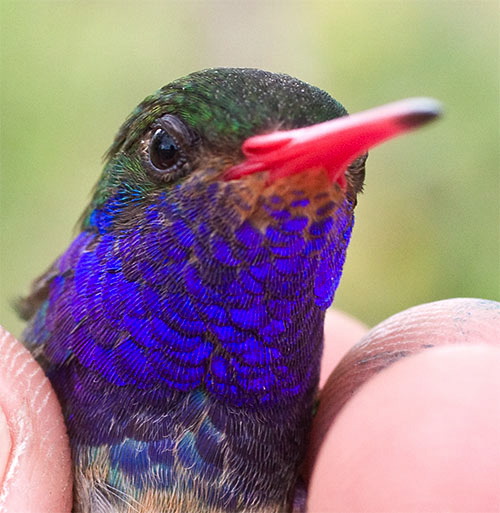
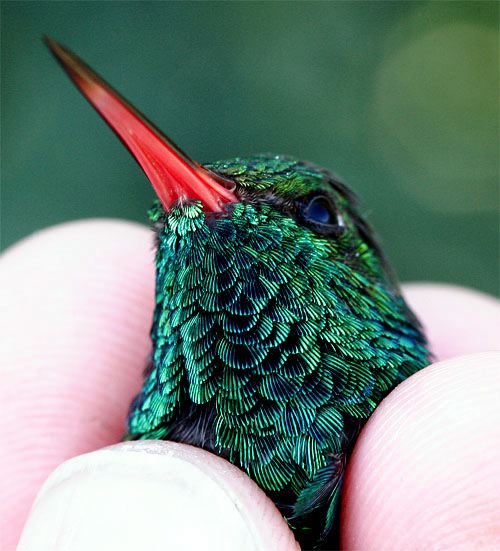
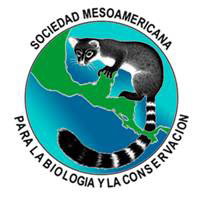 Familiar with our Ruby-throated Hummingbird banding success in Costa Rica's Guanacaste Province, Mariamar asked if we'd like to depart Hilton Pond Center temporarily to present results of our first four years of work. Since Costa Rica is part of Mesoamerica (i.e., "Middle America," including Mexico, all seven countries of Central America, and Caribbean islands)--we jumped at the possibility of traveling to El Salvador to talk about what we've learned monitoring ruby-throats in the tropics. The invitation became even more enticing when Mariamar said she also wanted us to offer a day-long introductory hummer banding workshop in the field for a group of Mesoamerican biologists who handle wild birds in their home countries.
Familiar with our Ruby-throated Hummingbird banding success in Costa Rica's Guanacaste Province, Mariamar asked if we'd like to depart Hilton Pond Center temporarily to present results of our first four years of work. Since Costa Rica is part of Mesoamerica (i.e., "Middle America," including Mexico, all seven countries of Central America, and Caribbean islands)--we jumped at the possibility of traveling to El Salvador to talk about what we've learned monitoring ruby-throats in the tropics. The invitation became even more enticing when Mariamar said she also wanted us to offer a day-long introductory hummer banding workshop in the field for a group of Mesoamerican biologists who handle wild birds in their home countries. After we expressed our excitement and agreement, Mariamar industriously looked for funds to cover our travel, food, and lodging and ultimately was successful getting major underwriting from USAID. Four North Carolina Audubon chapters--all interested in welfare of North American birds that winter in the tropics--also made financial donations,
After we expressed our excitement and agreement, Mariamar industriously looked for funds to cover our travel, food, and lodging and ultimately was successful getting major underwriting from USAID. Four North Carolina Audubon chapters--all interested in welfare of North American birds that winter in the tropics--also made financial donations,  with in-kind help coming from
with in-kind help coming from  She also said she would translate the PowerPoint slides we'd create in English, thus enabling participants to understand details of our presentation. (This was pretty important because we know almost no Spanish--an admitted deficiency when doing field work in Latin America.) With eager anticipation we booked our flight from Charlotte to San Salvador, with 90-minute layover in Atlanta.
She also said she would translate the PowerPoint slides we'd create in English, thus enabling participants to understand details of our presentation. (This was pretty important because we know almost no Spanish--an admitted deficiency when doing field work in Latin America.) With eager anticipation we booked our flight from Charlotte to San Salvador, with 90-minute layover in Atlanta.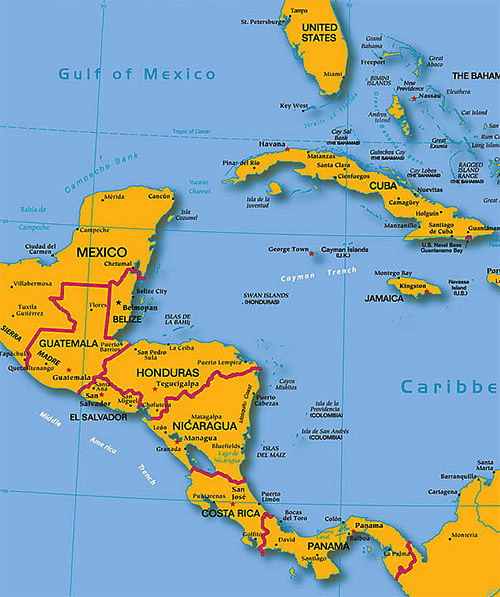

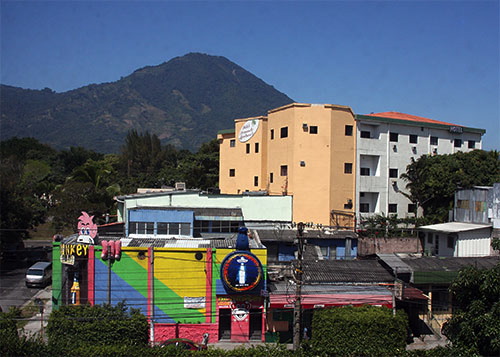
 plus a cluster of private residences, public apartments, and the Mister Monkey Bar.
plus a cluster of private residences, public apartments, and the Mister Monkey Bar.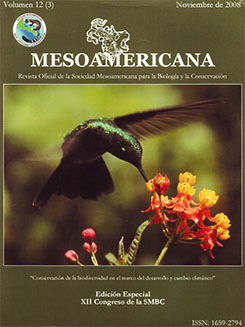 The study site at Cañas Dulces is an Aloe Vera plantation that concentrates RTHU in dense enough numbers to allow for mist netting; a few birds have been captured in traps. To date we have applied U.S.-issued bands to 267 individual RTHU; of these, three (two males and a female) returned in a later year, the first evidence of site fidelity by RTHU within their non-breeding range. We have also made extensive observations of RTHU territoriality and molt sequencing, and of nectar flower usage outside the aloe fields. We have not recaptured any RTHU banded by anyone on the species' North American breeding grounds; however, a female RTHU we banded in Guanacaste in January 2008 was encountered in June 2008 at Baxley, Georgia USA, about 2,400km to the north. This, to our knowledge, is the first hummingbird of any species to be banded in the tropics and later found in the U.S. or Canada. Other non-hummingbird Neotropical migrants caught incidentally in Guanacaste were also banded and released. Field assistance and financial support for the project were provided by groups of non-scientists from the U.S, Canada, and Costa Rica, and by Holbrook Travel.
The study site at Cañas Dulces is an Aloe Vera plantation that concentrates RTHU in dense enough numbers to allow for mist netting; a few birds have been captured in traps. To date we have applied U.S.-issued bands to 267 individual RTHU; of these, three (two males and a female) returned in a later year, the first evidence of site fidelity by RTHU within their non-breeding range. We have also made extensive observations of RTHU territoriality and molt sequencing, and of nectar flower usage outside the aloe fields. We have not recaptured any RTHU banded by anyone on the species' North American breeding grounds; however, a female RTHU we banded in Guanacaste in January 2008 was encountered in June 2008 at Baxley, Georgia USA, about 2,400km to the north. This, to our knowledge, is the first hummingbird of any species to be banded in the tropics and later found in the U.S. or Canada. Other non-hummingbird Neotropical migrants caught incidentally in Guanacaste were also banded and released. Field assistance and financial support for the project were provided by groups of non-scientists from the U.S, Canada, and Costa Rica, and by Holbrook Travel.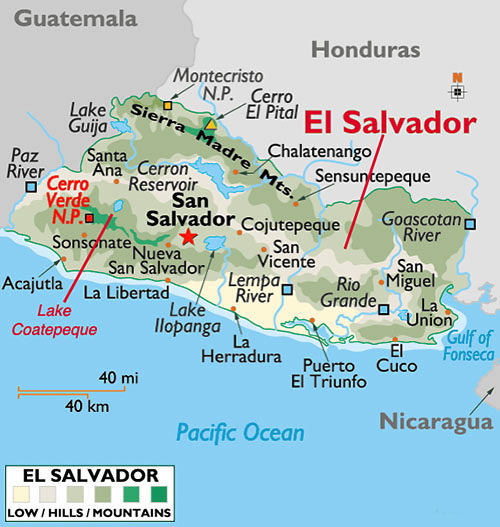
 where SalvaNATURA folks had been maintaining hummingbird feeders at Cerro Verde National Park (see map above). One of the carrots Mariamar Gutiérrez had dangled to get us to travel to the tropics was the possibility we'd be able to band a few Ruby-throated Hummingbirds while in El Salvador--something that had never been done before by anyone.
where SalvaNATURA folks had been maintaining hummingbird feeders at Cerro Verde National Park (see map above). One of the carrots Mariamar Gutiérrez had dangled to get us to travel to the tropics was the possibility we'd be able to band a few Ruby-throated Hummingbirds while in El Salvador--something that had never been done before by anyone.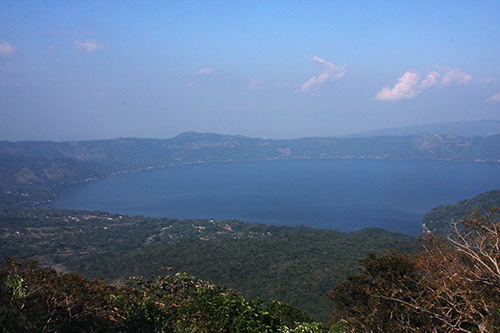

 With prospects looking good, we asked Roselvy and Pablo to instruct our field trip participants to erect seven mist nets in appropriate locations. This crew, all of whom had at least some experience capturing non-hummingbirds, completed its task in a flash, so from then on it was merely a matter of waiting to see if any birds might hit the nets.
With prospects looking good, we asked Roselvy and Pablo to instruct our field trip participants to erect seven mist nets in appropriate locations. This crew, all of whom had at least some experience capturing non-hummingbirds, completed its task in a flash, so from then on it was merely a matter of waiting to see if any birds might hit the nets.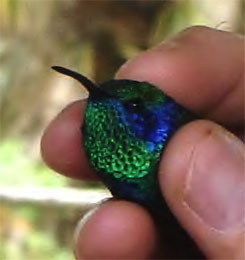 As the group examined the hummer and talked about banding techniques, we stressed the importance of checking nets often, so every 15 minutes the conversation came to a halt as group members fanned out to see what else might have been caught. Pretty quickly we snared two more mountain gems, and then a much more colorful individual--a Green Violetear (right).
As the group examined the hummer and talked about banding techniques, we stressed the importance of checking nets often, so every 15 minutes the conversation came to a halt as group members fanned out to see what else might have been caught. Pretty quickly we snared two more mountain gems, and then a much more colorful individual--a Green Violetear (right).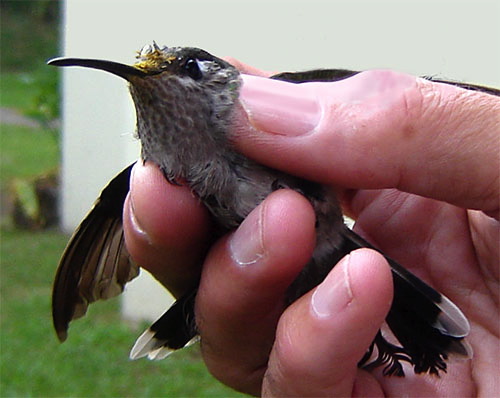
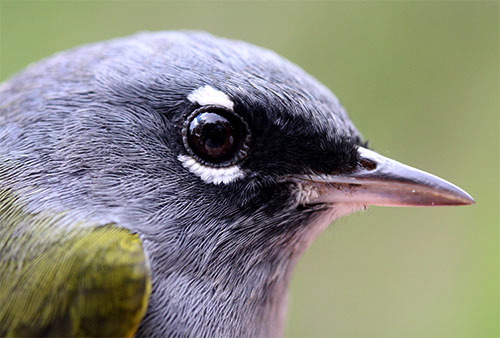
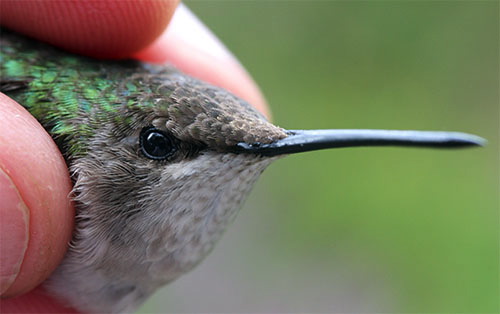

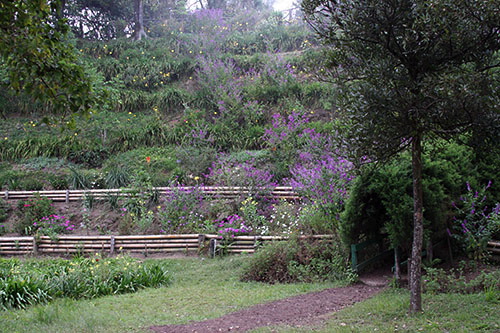
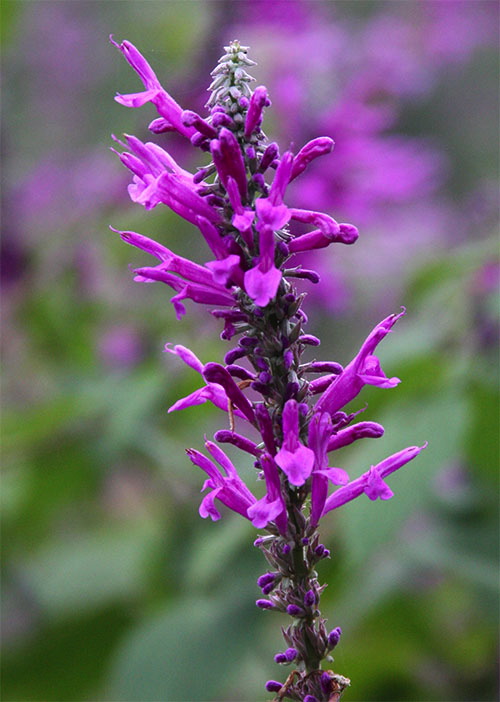

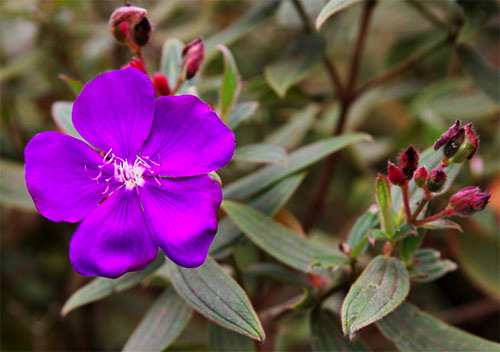
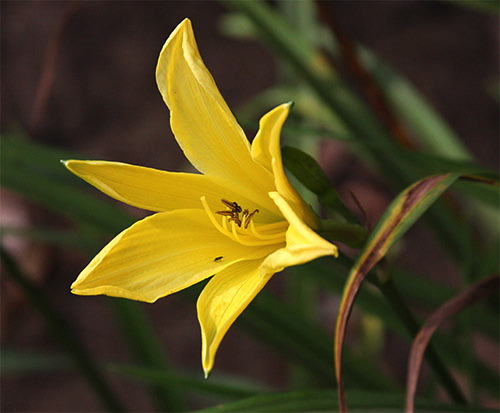
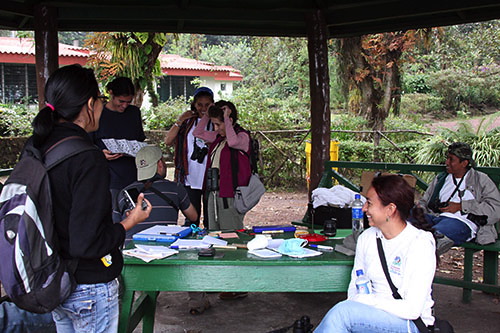
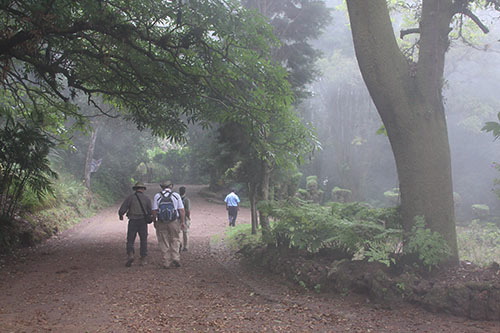

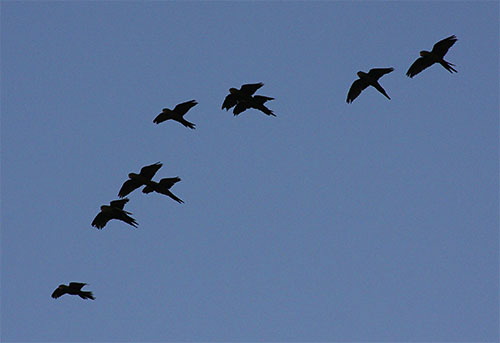


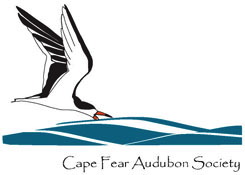
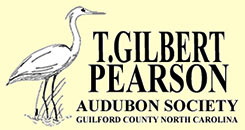

 ..
..


 Our dear and lifelong friend, Haywood Daniel McCallum Jr., was shot several times and wounded severely by robbers outside his home in Richmond VA on the evening of 11 October 2008. We have known kind-hearted Woody, a gifted and widely admired music teacher retired from Richmond schools, for almost 40 years--ever since 1969 when we were on "staph" and he was a delegate to West Virginia's prestigious National Youth Science Camp.
Our dear and lifelong friend, Haywood Daniel McCallum Jr., was shot several times and wounded severely by robbers outside his home in Richmond VA on the evening of 11 October 2008. We have known kind-hearted Woody, a gifted and widely admired music teacher retired from Richmond schools, for almost 40 years--ever since 1969 when we were on "staph" and he was a delegate to West Virginia's prestigious National Youth Science Camp. Oct 15 to Mar 15:
Oct 15 to Mar 15: